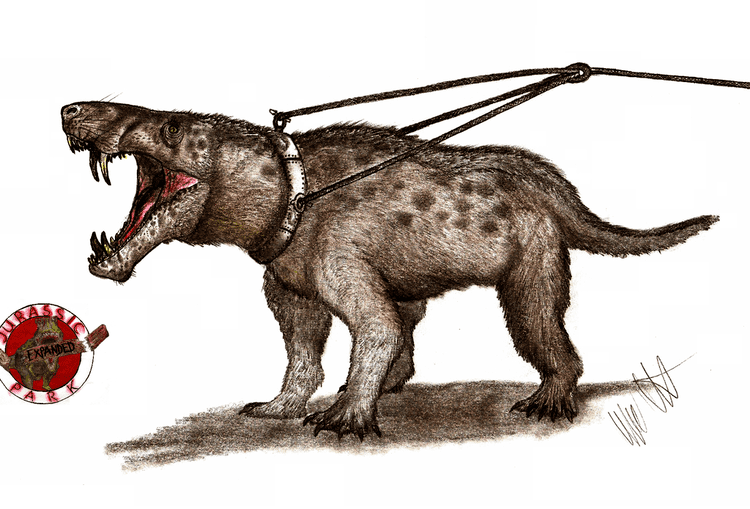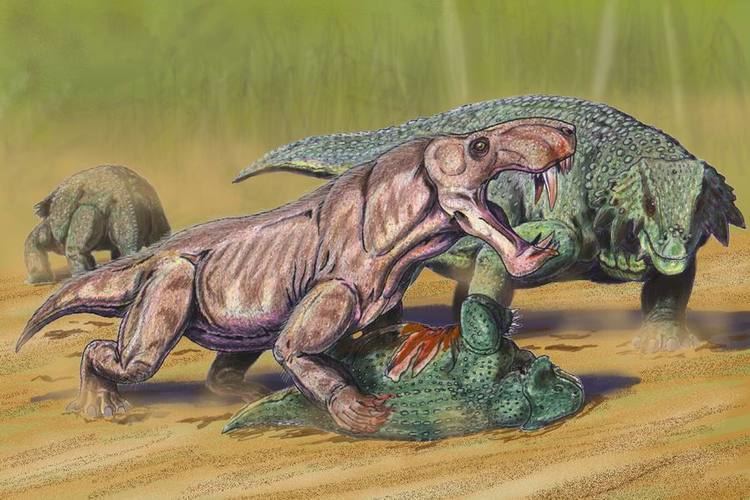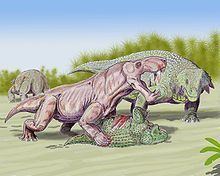Phylum Chordata Rank Genus | Family †Gorgonopsidae Scientific name Inostrancevia Order Therapsid | |
Similar Gorgonopsia, Scutosaurus, Therapsid, Synapsid, Gorgonops | ||
Asdc inostrancevia vs postosuchus
Inostrancevia is an extinct genus of carnivorous therapsids, containing the largest members of the family Gorgonopsidae, predators characterized by long, saber-tooth-like canines. The various species inhabited Northern Russia during the Upper Tatarian (Vyatskian), a Russian regional stage equivalent to the Wuchiapingian stage of the Late Permian period, dating from approximately 260 to 254 mya. It is known from several skulls and two almost complete skeletons.
Contents
- Asdc inostrancevia vs postosuchus
- Fossil replica assembly inostrancevia
- Description
- Etymology
- Discovery
- Classification
- References

Fossil replica assembly inostrancevia
Description

The species in Inostrancevia were the largest gorgonopsids known, known individuals have total body lengths reaching up to 3.5 m (11.5 ft) and long, narrow skulls up to 60 cm (24 in) long. Like several other gorgonopsids, Inostrancevia was characterized by strongly developed canine teeth, with those of the upper jaw up to 15 cm (5.9 in) long, the root corresponding to half its length. Their bodies were slender, with rather short legs. Inostrancevia shared its habitat with Scutosaurus which it likely preyed upon.
Etymology
Inostrancevia was named by the Russian paleontologist Vladimir P. Amalitsky in honour of the Russian geologist Aleksandr Inostrantsev.
Discovery

The first fossils were found in the Sokolki Assemblage in the Oblast of Arkhangelsk as part of the Northern Dvina River excavations led by Amalitsky during the end of the 19th century. Two nearly complete skeletons were found alongside several other skeletal remains, one of which was mounted and exhibited in Saint Petersburg in 1900 with the other following a few years later. Proper descriptions of the findings were published posthumously in 1922.
Classification
Below is a cladogram from the phylogenetic analysis of Gebauer (2007):
